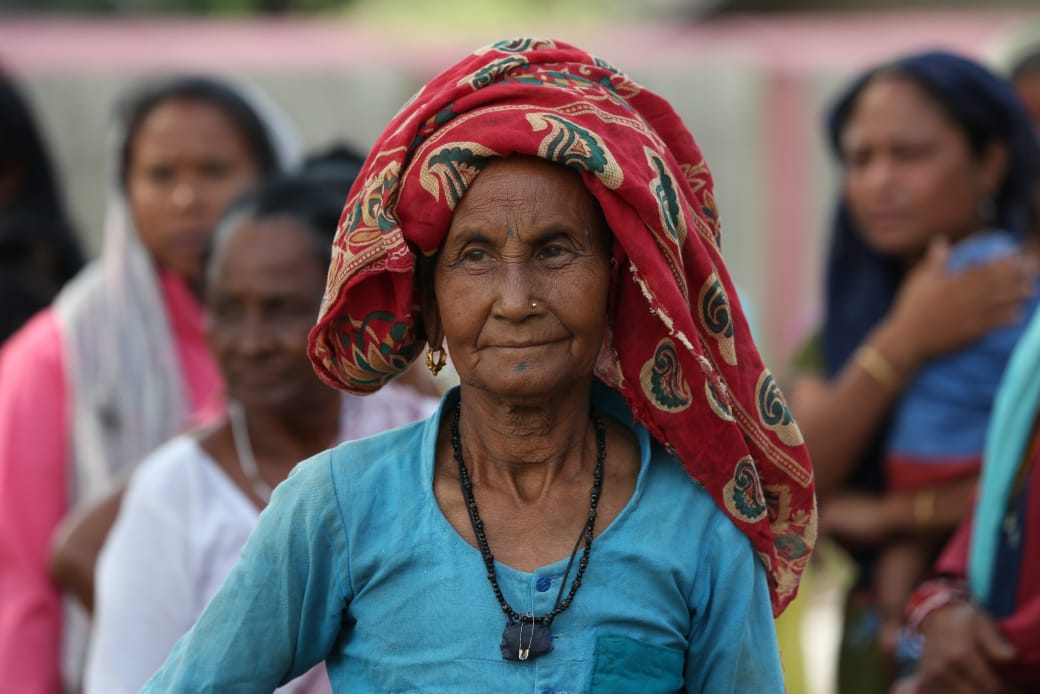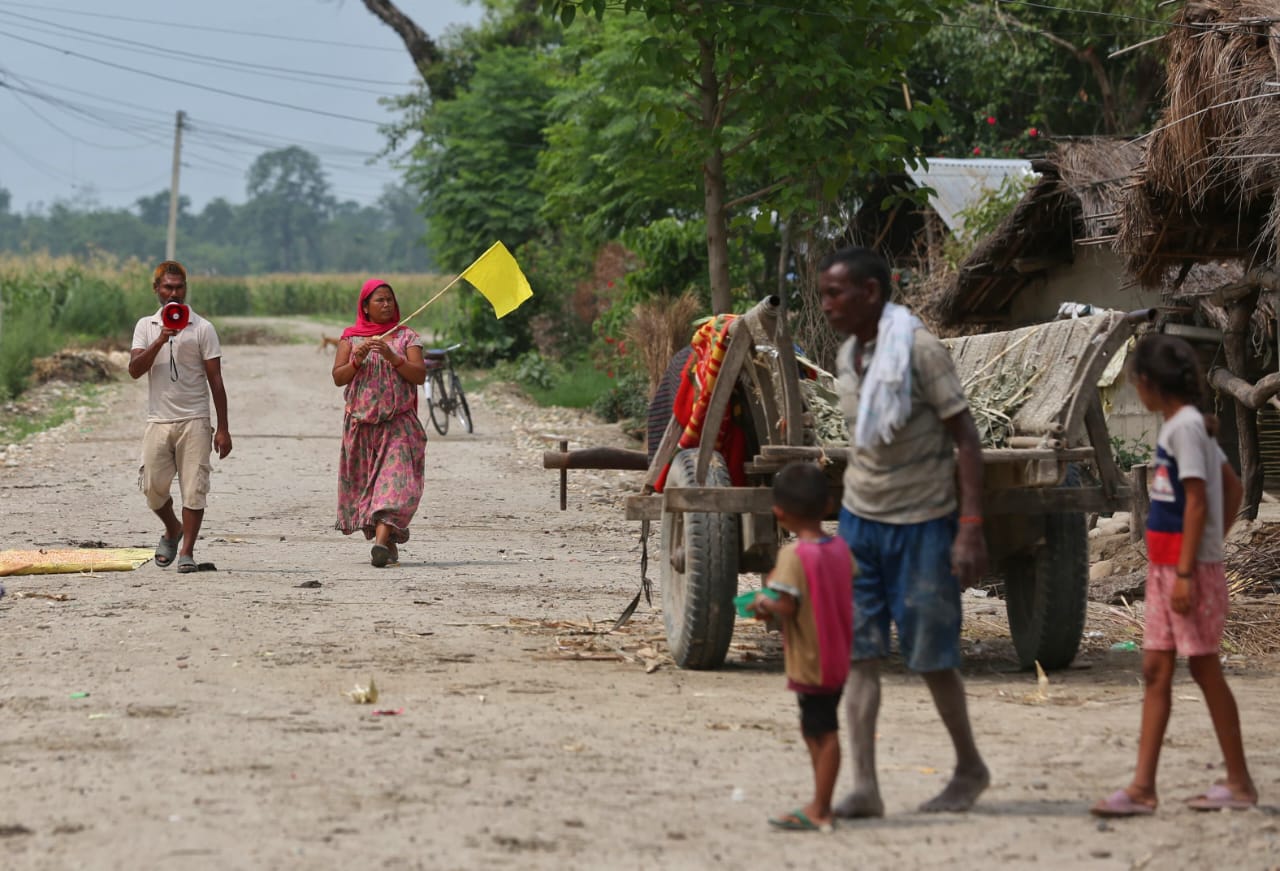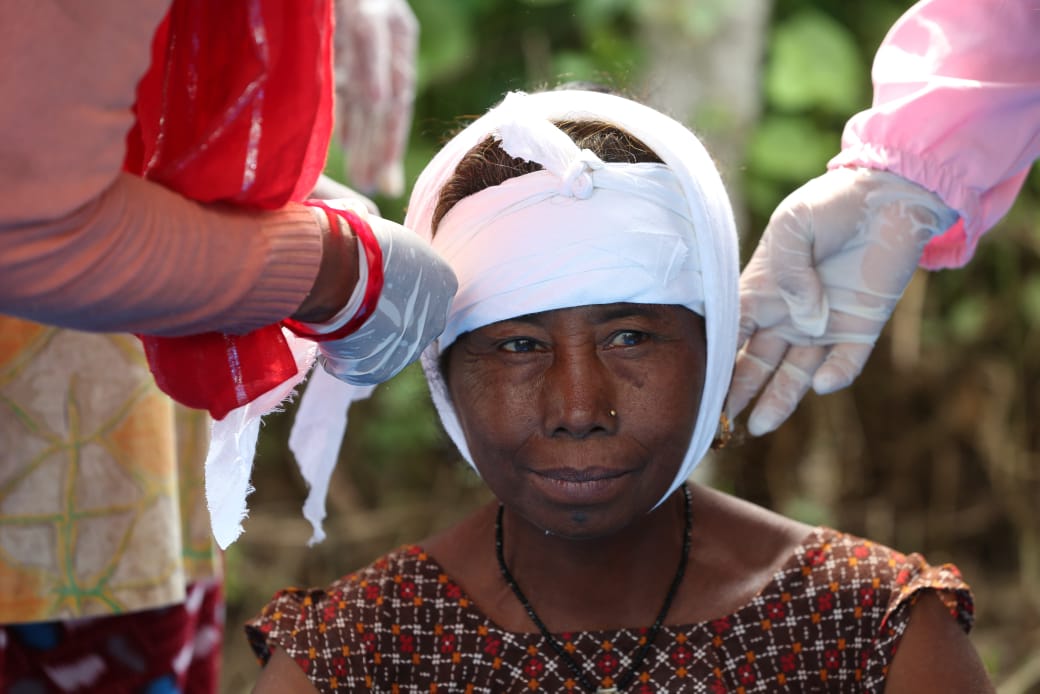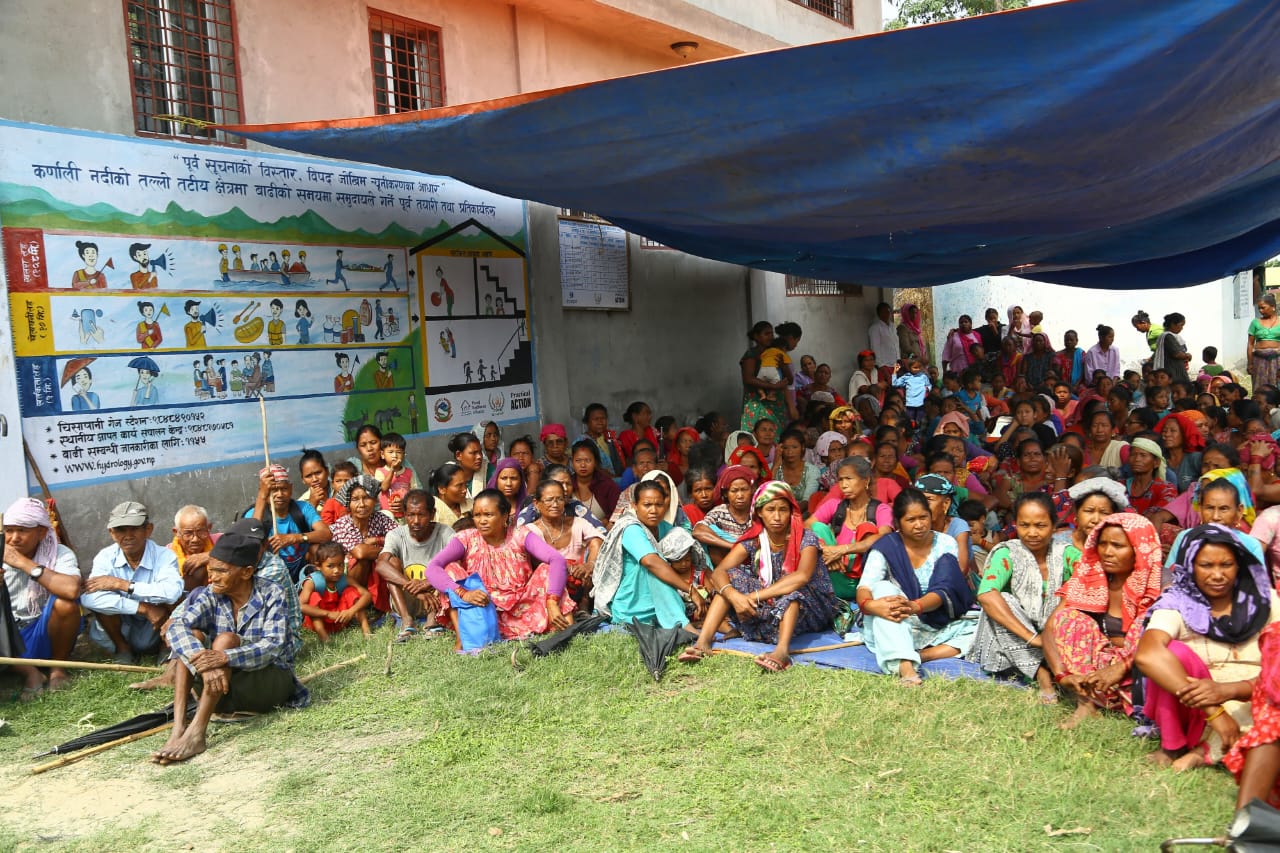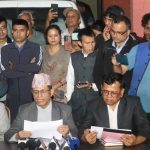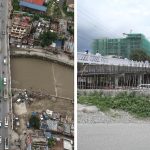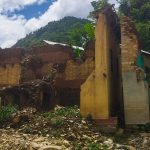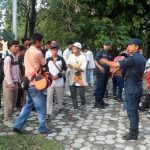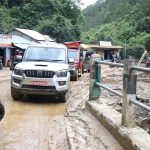Rajapur (Bardiya): Like any other day, as Khushiram Tharu in Sangarshanagar, Rajapur prepares to go out, he receives an SMS alert.
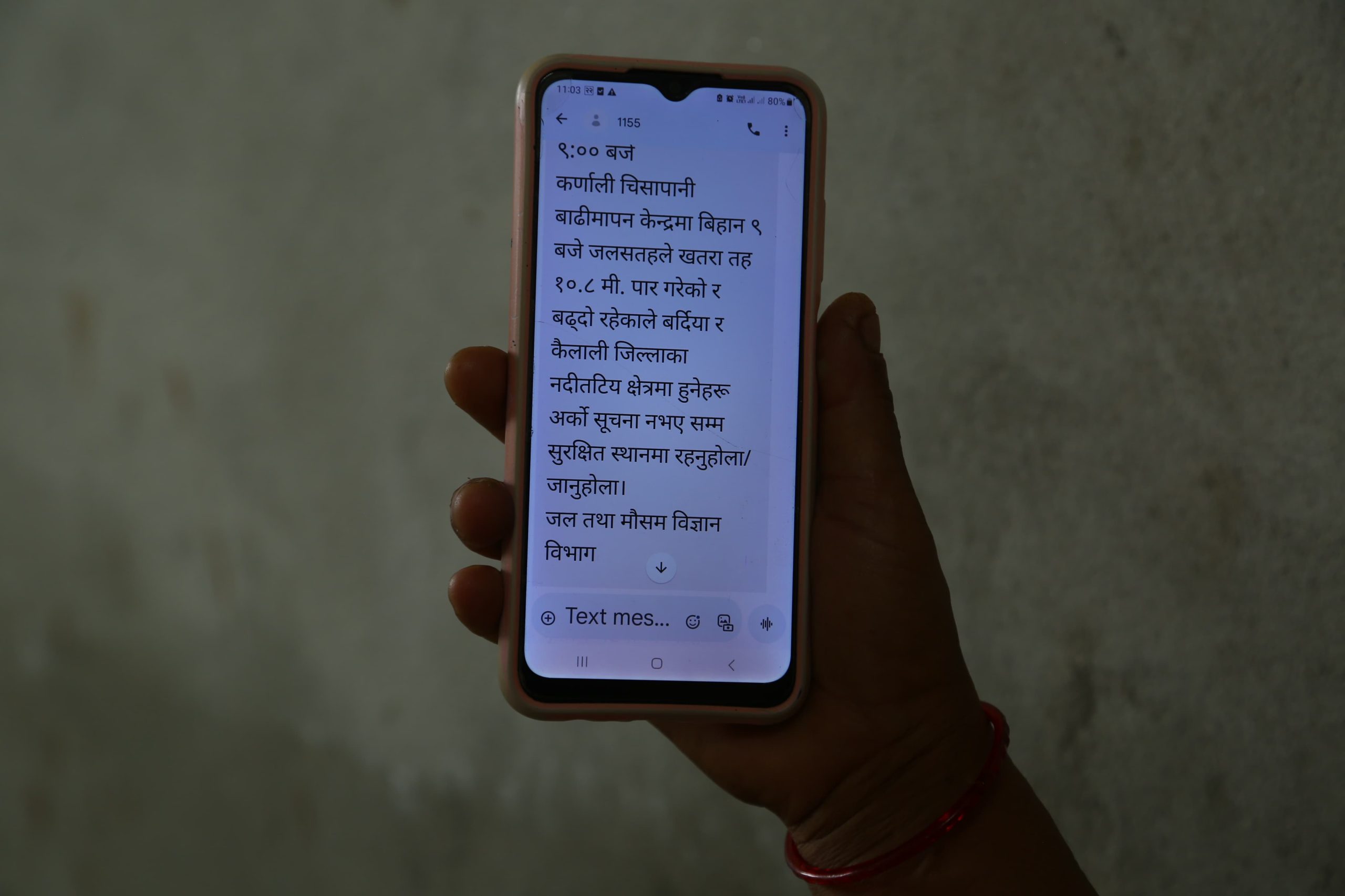
“Karnali river level has reached 9 meters. Be alert!” An Early Warning System task force coordinator, Khushiram, immediately calls gauge reader, Parbati Gurung, in Chisapani. ‘Yes, the river level is rising; alert the communities, ‘ she speaks on the phone.
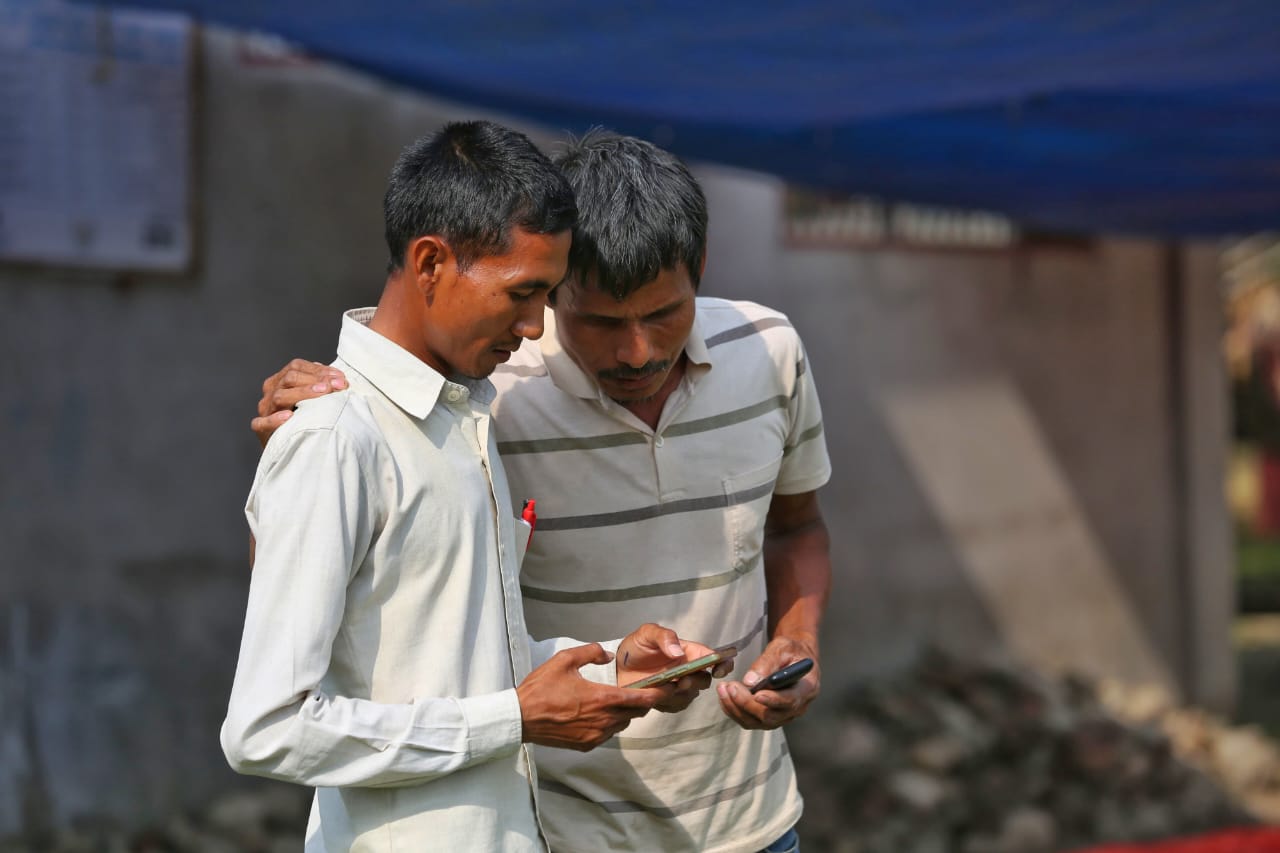
Khushiram finds the microphone and starts disseminating messages to his community living in the Lower Karnali river basin. Every year, on World Environment Day (June 5), one can find similar enactments in the Lower Karnali region. Here, communities organise and actively participate in flood mock exercises.
This initiative was started in 2014 by Practical Action and its implementing partners and has now become a regular day to look forward to. It has been 8 years since Khushiram and his community have been part of this mock drill. The exercise actively engages a wide range of stakeholders, including the Department of Hydrology and Meteorology (DHM), Provincial Governments, District Emergency Operation Centres (DEOCs), Local Emergency Operation Centres (LEOCs), Community Disaster Management Committees (CDMCs), security forces, media personnel, and others.

Importantly, local governments have begun allocating budget for such community level activity through their Red Book and have taken on a lead role in organising and coordinating. This year, 101 Community Disaster Management Committees (CDMCs) from Lower Karnali basin and Babai river basin, working with Practical Action, participated in the flood mock drills.
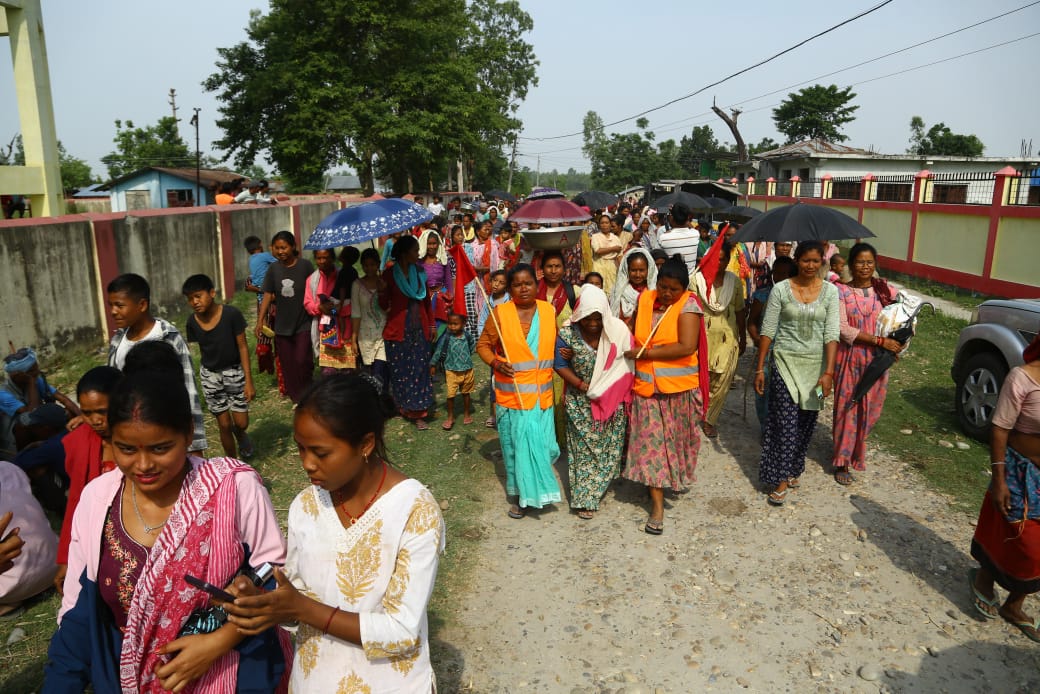
Mock flood exercises test the effectiveness of four interrelated components of flood early warning system- namely risk knowledge, monitoring and warning, dissemination and communication, and response capability, of different organizations and community members to take coordinated action to avoid losses by using early warning information during real flood events.
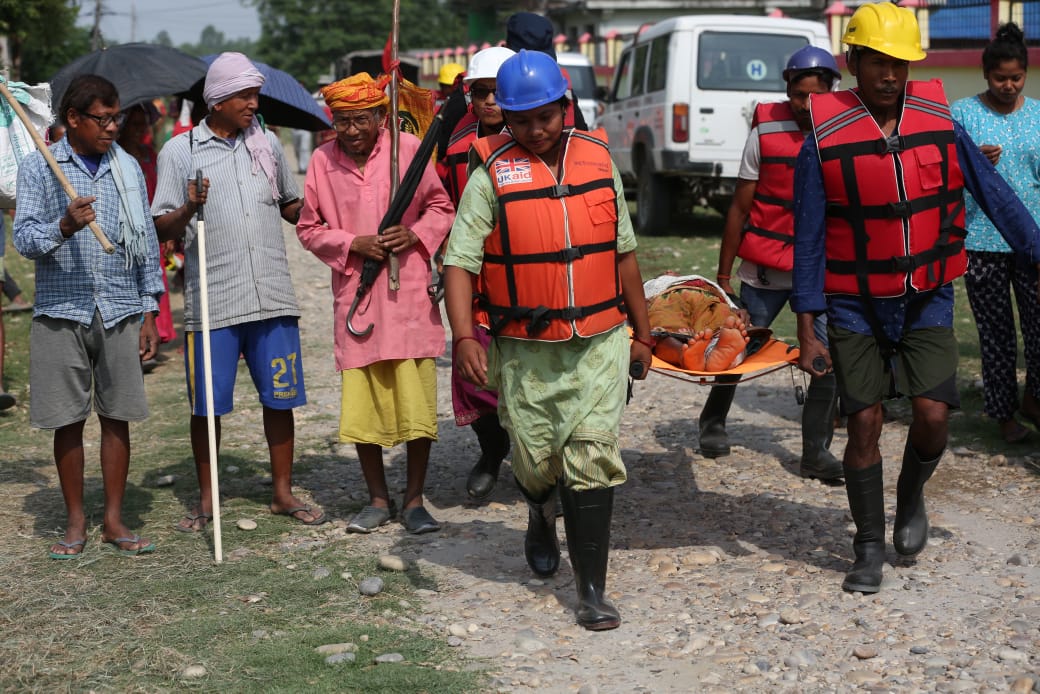
Put simply, mock flood exercise helps avert the possible flood catastrophes by preparing in advance. In this exercise, communities receive flood risk information well before flood reaches them. The community is then able to use their knowledge and skills to receive and disseminate the information to enable well-coordinated response measures.

An assigned focal person (generally the chairperson of the CDMC or the EWS task force coordinator) receives information from gauge station or LEOC that the flood level in the monitoring station is increasing towards warning level. Then, CDMC meeting is held immediately ensuring that all the members and task forces within CDMCs are ready to act if required.

Early Warning Action task force and women volunteers disseminate the information by using a megaphone, door-to-door visits, showing flags or other appropriate means of communication. Half an hour later, focal contact person receives the warning information that the flood level at the monitoring stations has reached the warning level.
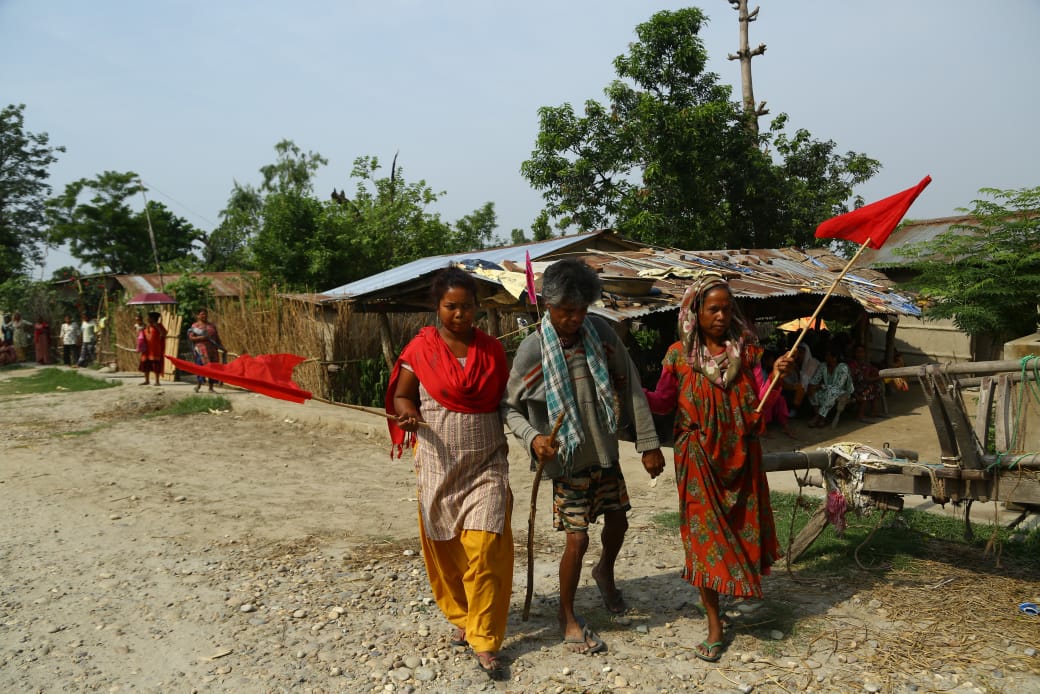
Warning siren is blown and task force volunteers inform communities. Vulnerable population like elderly, children, pregnant women, people with disabilities, etc are helped to move to safety. Finally, when the third notice of danger level is received, all community people move to safe shelter.
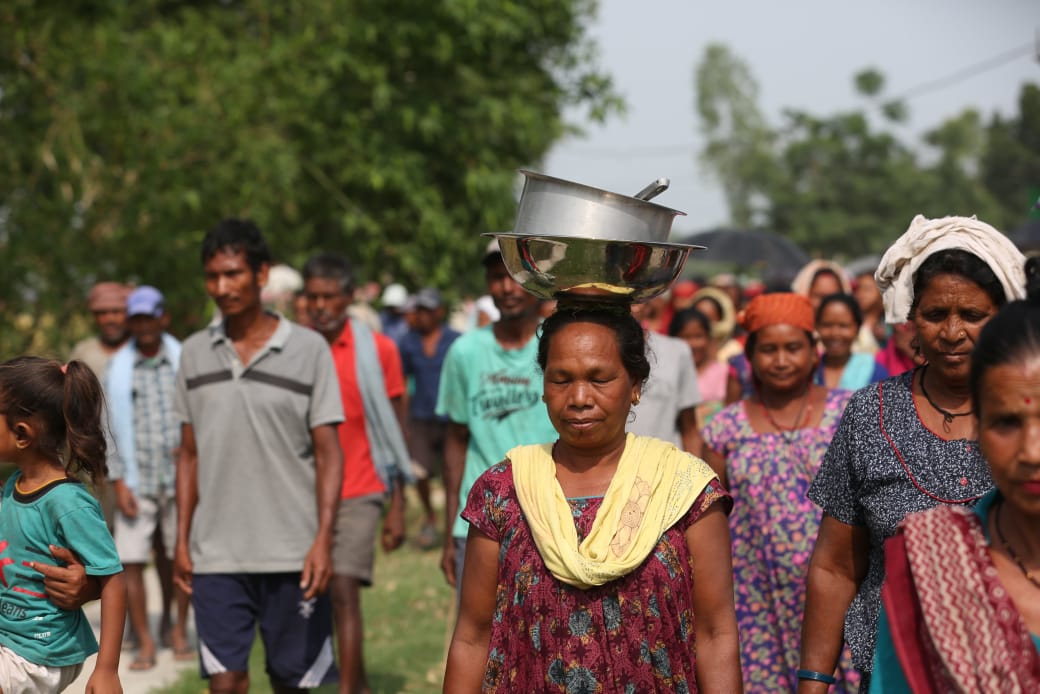
Search and rescue task force volunteers, first aid and social protection volunteers fulfill their roles to help needy people. This year, a local partner organisation, PESWAN from Kanchanpur was invited to observe the flood mock exercise. They arrived with 2 members of 16 CDMCs.
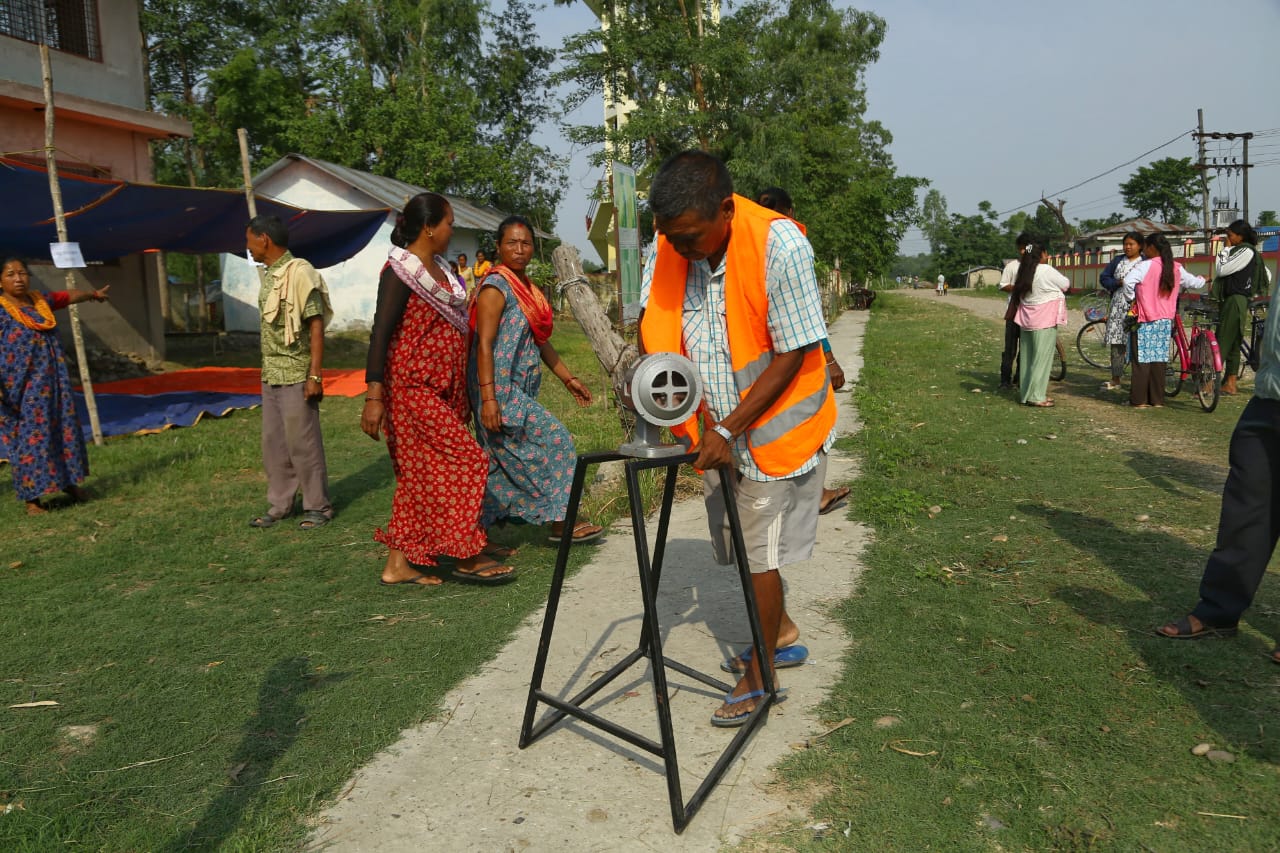
When asked if they found the mock drill effective, Daman Chand, the board member of PESWAN said, ‘This was a very real enactment of flood. When flood actually happens in real life, usually people don’t know what to do, so this practice will help us remember and take required actions. We are excited to organise mock drills next year in Kanchanpur.’

While the flood early warning systems and its practice through mock drills help save lives and valuables, farmers have other assets like paddy in the fields that cannot be moved to safety in time. For this, Practical Action has also developed a parametric flood insurance known as Index-based Flood Insurance (IBFI).
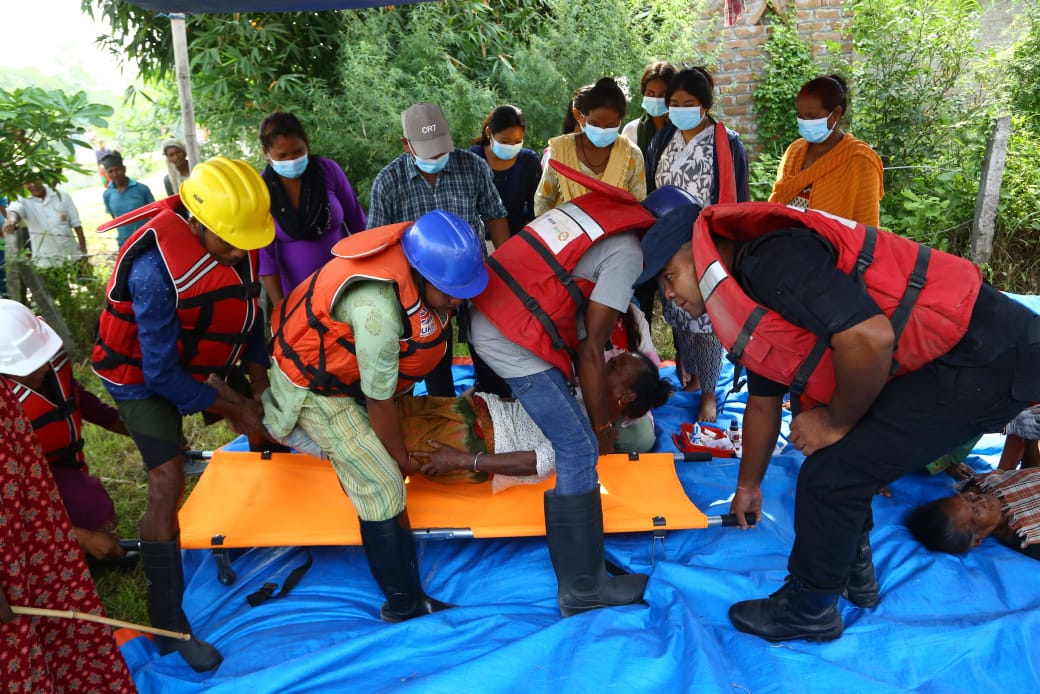
The payout triggers are aligned with the thresholds of early warning systems. Since the potential losses in paddy are estimated based on the historical flood events and loss and damage modelling, the triggers and payouts are pre-agreed and integrated with early warning thresholds. This enables quick payouts based on estimated loss and underlying risk, instead of time-consuming damage assessments.

Through IBFI, farmers receive funds within 2 to 3 weeks after a flood, allowing them to begin early recovery, avoid relying on high-interest loans, and diversify their livelihood.

